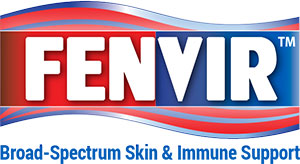Other Names: Malpighia emarginata, Barbados cherry, West Indian cherry, wild crepemyrtle
Acerola is a tropical plant native to the Caribbean, South America, Central America and Southern Mexico that’s fruit is renowned for its incredible health benefits. Acerola cherry fruit has one of the highest concentrations of natural vitamin C per gram of fruit and also contains bioflavonoids, vitamins A, B1, B2, B3, folate, potassium, pantothenic acid, magnesium and carotenoids.
Its high nutritional content provides consumers with an array of benefits including:
- Helping the body when new cells need to be formed
- Supporting natural defenses that protect DNA
- Promoting the body’s ability to naturally protect itself from free radicals
As an antioxidant-filled super fruit, the acerola extract not only supports natural defenses that allow the immune system to protect the body from free radicals, but it also promotes detoxification which disrupts the ability of harmful invaders to enter the bloodstream, thereby promoting overall health.
Studies on Acerola Fruit:
- Costa A, Lindmark L, Arruda LH, Assumpção EC, Ota FS, Pereira Mde O, Langen SS. Clinical, biometric and ultrasound assessment of the effects of daily use of a nutraceutical composed of lycopene, acerola extract, grape seed extract and Biomarine Complex in photoaged human skin. An Bras Dermatol. 2012 Jan-Feb;87(1):52-61.
- Kumar, V. B. A.; Jeejamol, C.; Murugan, K.; Mohan, T. C. K. Biochemical analysis of the nutraceutical characteristics in Barbados cherry (Malpighia glabra L.). Journal of Phytological Research 2007 Vol. 20 No. 2 pp. 237-242.
- Takayuki Hanamura1), Hitoshi Aoki1), Eriko Uchida1), Toshihiko Hagiwara. Effects of Acerola Beverage Intake on Skin Conditions. Nippon Shokuhin Kagaku Kogaku Kaishi Vol. 55 (2008) No. 1 P 6-12.
- Adilson Costa; Lars Lindmark; Lúcia Helena Fávaro Arruda; Elvira Cancio Assumpção; Fernanda Sayuri Ota; Margareth de Oliveira Pereira; Stéphanie Selma Barros Langen. Clinical, biometric and ultrasound assessment of the effects of daily use of a nutraceutical composed of lycopene, acerola extract, grape seed extract and Biomarine Complex in photoaged human skin. An. Bras. Dermatol. vol.87 no.1 Rio de Janeiro Jan./Feb. 2012.
Other research:
- Oliveira Lde S, Moura CF, De Brito ES, Mamede RV, De Miranda MR. Antioxidant metabolism during fruit development of different acerola (Malpighia emarginata D.C) clones. J Agric Food Chem. 2012 Aug 15;60(32):7957-64. doi: 10.1021/jf3005614. Epub 2012 Aug 3.
- Leffa DD, da Silva J, Daumann F, Dajori AL, Longaretti LM, Damiani AP, de Lira F, Campos F, Ferraz Ade B, Côrrea DS, de Andrade VM. Corrective effects of acerola (Malpighia emarginata DC.) juice intake on biochemical and genotoxical parameters in mice fed on a high-fat diet. Mutat Res. 2014 Dec;770:144-52. doi: 10.1016/j.mrfmmm.2013.11.005. Epub 2013 Dec 1.
- Wakabayashi H, Fukushima H, Yamada T, Kawase M, Shirataki Y, Satoh K, Tobe T, Hashimoto K, Kurihara T, Motohashi N, Sakagami H. Inhibition of LPS-stimulated NO production in mouse macrophage-like cells by Barbados cherry, a fruit of Malpighia emarginata DC. Anticancer Res. 2003 Jul-Aug;23(4):3237-41.
- Kawaguchi M, Tanabe H, Nagamine K. Isolation and characterization of a novel flavonoid possessing a 4,2”-glycosidic linkage from green mature acerola (Malpighia emarginata DC.) fruit. Biosci Biotechnol Biochem. 2007 May;71(5):1130-5. Epub 2007 May 7.
- Hanamura T, Mayama C, Aoki H, Hirayama Y, Shimizu M. Antihyperglycemic effect of polyphenols from Acerola (Malpighia emarginata DC.) fruit. Biosci Biotechnol Biochem. 2006 Aug;70(8):1813-20.
- Nunes Rda S, Kahl VF, Sarmento Mda S, Richter MF, Abin-Carriquiry JA, Martinez MM, Ferraz Ade B, Da Silva J. Genotoxic and antigenotoxic activity of acerola (Malpighia glabra L.) extract in relation to the geographic origin. Phytother Res. 2013 Oct;27(10):1495-501. doi: 10.1002/ptr.4896. Epub 2012 Nov 26.
- Mezadri T, Fernández-Pachón MS, Villaño D, García-Parrilla MC, Troncoso AM. [The acerola fruit: composition, productive characteristics and economic importance]. [Article in Spanish] Arch Latinoam Nutr. 2006 Jun;56(2):101-9.
- Hassimotto NM, Genovese MI, Lajolo FM. Antioxidant activity of dietary fruits, vegetables, and commercial frozen fruit pulps. J Agric Food Chem. 2005 Apr 20;53(8):2928-35.
- Nunes Rda S, Kahl VF, Sarmento Mda S, Richter MF, Costa-Lotufo LV, Rodrigues FA, Abin-Carriquiry JA, Martinez MM, Ferronatto S, Ferraz Ade B, da Silva J. Antigenotoxicity and antioxidant activity of Acerola fruit (Malpighia glabra L.) at two stages of ripeness. Plant Foods Hum Nutr. 2011 Jun;66(2):129-35. doi: 10.1007/s11130-011-0223-7.
These statements have not been evaluated by the FDA. This product is not intended to prevent, treat, cure, or diagnose any disease. Information on this site is for educational purposes only. It is not medical advice. Consult a physician if you are seeking medical advice or have a medical problem.

